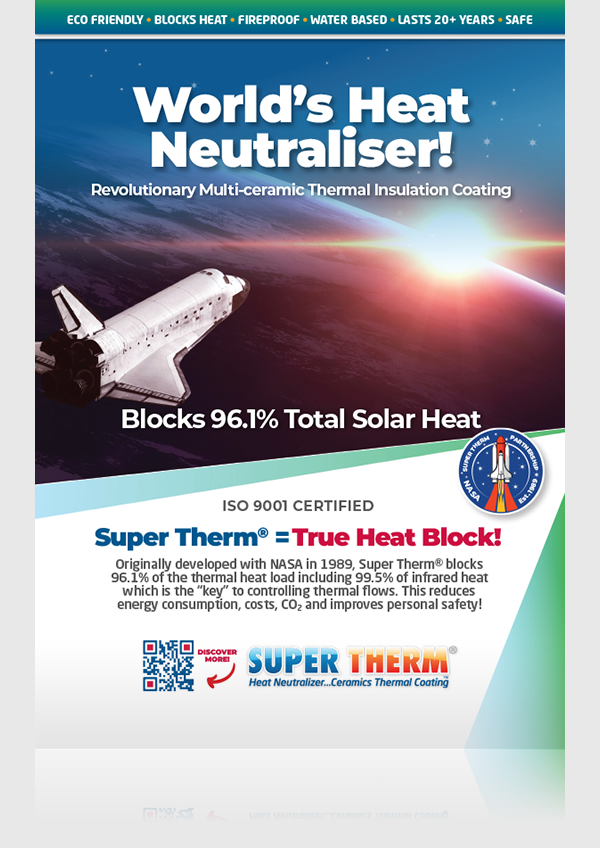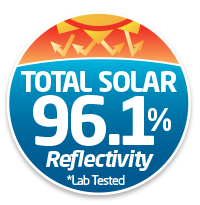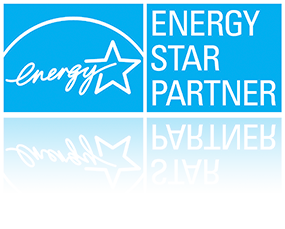Concrete Surface Preparation Guidelines
International Concrete Repair Institute
Capillarity
Capillarity, the transmission of moisture and water in masonry is the action by which the surface of a liquid, where it is in contact with a solid, is elevated or depressed (rises or falls). The attraction or revulsion is caused by capillarity. By capillarity, moisture may travel from a lower to higher elevation or can travel in any direction. The amount of moisture that can be transmitted from the ground by capillarity action is often underestimated. Tests* have indicated that as much as 12 gallons of water per 1,000 square feet per day can be transmitted through a concrete slab and, if permitted, evaporated into the air.
When the slab is covered by floor covering, this moisture will collect and attack the bond of the adhesive. If, during the transmission, it carries alkalis, salts or additives from the concrete, it will destroy or deteriorate adhesives, resulting in failure. The same applies to vertical masonry where fog, dew and dampness can collect, also carrying alkalis that will attack and harm various paints. The distance which water will rise from the ground by capillarity is also underestimated. Tests* indicate that moisture can climb from a water table that may be 20 feet below the ground. Obviously, general ground dampness speeds the transmission of moisture. It is suspected that this transmission may result from a combination of capillarity, absorption, and various pressures rather than capillarity alone. Nevertheless, moisture can migrate from this depth. Capillarity action usually takes place 24 hours a day, every day, over the entire area of a slab or masonry, so that a tremendous amount of water can migrate and be absorbed into masonry via capillarity alone.
*By Housing and Home Finance Agency U.S. Government at Forest Products Laboratory.
What is Alkali?
Alkali is never pure and rarely stable, is made up of a combination of elements, and is almost always reacting with elements. To break down the elements into chemical terms, we refer to the Periodic Chart of Elements. We start with hydrogen, then lithium, sodium, potassium, rubidium, cesium and francium.
Francium is a radioactive element with a half-life of only twenty minutes. The other five are the very active alkali metals. Each element has electrons and molecules which are always eager to take part in chemical reactions with other elements. The two most important alkali metals are sodium and potassium. We find a hint of them in potassium carbonate and sodium carbonate. Sodium makes up 2.6% of the Earth’s crust and potassium makes up 2.5% – yet we never see them. They are always found in combination with other elements.
The “Alkali Problem” in Concrete Walls and Subfloors
The increased use of concrete subfloors in direct contact with the ground makes more important than ever complete understanding of moisture and alkali inherent in these subfloors and their effects on surface sealers (paints) and floor coverings. Well known as the “alkali problem,” this condition is primarily a problem of moisture. Alkali is present in every concrete slab and is more detrimental with moisture. On adequately ventilated suspended concrete subfloors, moisture is not present in troublesome quantities. Where the slab is in direct contact with the ground or is in a poorly ventilated air space, moisture is brought up through the slab by capillary action. It dissolves the alkaline salts in the concrete and appears at the surface as a destructive alkaline solution.
The most serious difficulty caused by alkaline solutions is the chemical reaction, ” saponification “. This is essentially the same reaction that takes place when certain oils or fatty acids are mixed with alkali, as in the manufacture of soap. Although moisture and alkali conditions may vary greatly, there is always sufficient moisture in the ground and alkali in concrete to present an “alkali problem” on subfloors affected by ground moisture. It is never safe to assume that a concrete slab will always be dry because it has been dry for several years. In many cases, a concrete floor will seem to be dry because the moisture content is very small and evaporates into the air as soon as it reaches the surface. When paint or floor covering is applied, evaporation is prevented or retarded and the alkaline solution collects under the paint or floor covering to start destroying that paint or covering.
What is a Cement Gel?
A cement gel is a jelly-like swelling that occurs around each grain of Portland cement when water is added to the concrete mix. Aggregate gel is essentially the same. It is the initial reaction product between cement and water. The gel is the controlling factor in cracking, uniformity, and structural quality of concrete. Also, it relates to the size of the voids and pores. The cement gel imparts fatty and cohesive properties to the mix. As hydration of the cement proceeds, the gel partly crystallizes and, on drying, reverts to almost the original cement grain and size. Gel size and hydration vary widely, depending upon water and temperature. It is this difference that causes variations in the quality of concrete for a given mix design. In the heat of the summer, gels form faster and larger. Large gels absorb more water from the mix. Thus, resulting concrete has poorer quality. As water is consumed by hydration and lost through evaporation, internal stresses are created. Controlling the size of gels, the more dense a concrete, the higher structural quality. Thus, the gel is the major governing factor in controlling the uniformity, structural quality and cracking of concrete.
Concrete Dust Ruins Merchandise, Machinery and People:
What is concrete dust? Every time a truck moves over your floors – every time a person walks on them – every time your sweeper sweeps them – small particles of the concrete surface are ground away and form the concrete dust. This is not ordinary dust; it is sharp silicate which cuts into your machinery – into your merchandise – into the lungs of your employees – causing damage in every direction. Concrete dust is a sure sign that your floors are disintegrating and will soon demand expensive repairs. Concrete dust is a dangerous and costly foe of efficiency, but it is an unnecessary evil, for it can be prevented.
Using SP Interlock® helps prevent Concrete Dust and Stucco Spall Off. SP Interlock® chemical reaction with alkali and lime causes the billions of independent particles (concrete dust) of masonry to be solidified into one entity virtually eliminating the cause of costly machinery repair, lung infection and annoying dust. SP Interlock® is designed to alleviate these problems on new or old masonry.
SP Interlock® for the Floor Covering and Paint Trade
Floor covering failures are caused by one or a combination of the following: moisture, alkali, or hydrostatic pressure. To apply asphalt, vinyl, rubber tile. etc., three items are necessary – a floor (usually concrete), adhesive and covering. We now know the make-up of concrete and the problems built into it in the form of alkali, lime and moisture. Another important fact is needed — that is porosity. In concrete, water is used with the mix. As the concrete is setting up and commencing its long curing process, water evaporates out of the concrete. The slab of concrete acts as a sponge and draws moisture from the ground. The moisture passes through these voids and mixes with the ever present alkali. When floor covering is applied to the slab, the drawing action is speeded up. When this alkali moisture is drawn to the surface of the slab, it comes in contact with the adhesive. What occurs when alkaline water meets the adhesive? The adhesive emulsifies or commences to deteriorate. The end result to the floor covering is alkali bubbles and blisters, usually followed by warping, cracking, and peeling of the floor covering, which necessitates replacing or redoing the tile. Why do paints blister and crack on masonry surfaces? They blister and crack because of saponification. What is saponification? When soap is manufactured, the basic ingredients are a form of alkali and oil. The combination of the alkali in the masonry and the oil in the paint cause the saponification, which results in flaking, blistering, bleeding and burning off of the paint on the surface. Vinyl, rubber, or latex-based paints are in widespread use today. These, as well as most oil based paints, peel and crack off masonry surfaces. The prime reason for this is still that the alkali and lime are fighting the paints. In the event that these surface coatings are used as a sealer or waterproofing agent, they must be applied and periodically reapplied so that the coatings are 3 -6 layers on the surface. These procedures are harmful to masonry and provide only temporary relief. Superior’s solvent- based penetrating protection paints are designed to penetrate into the top pores of the concrete to anchor for long wear life.
Wall Sweating
With respect to wall sweating, it should be remembered that surfaces of most common masonry building materials have an affinity for water molecules. The water molecular film is proportioned to the relative humidity. At saturation point, all voids, pores and capillaries can become completely filled. Then, when the atmospheric condition, inside or outside, which caused the excess of moisture in the first place is alleviated, the porous wall may be filled to saturation point with moisture in liquid form. This condition then provides an excellent opportunity for vapor travel within a wall. In its travels, the vapor may strike a cold area or dew point, and condense in sufficient quantities to reach the interior wall surface and appear as wall sweat or bleeding. Each of the above, if allowed to go unchecked, can be responsible for heavy maintenance costs by causing peeling paint, spalling, formation of mildew and efflorescence. All porous masonry wall materials do the same thing, unless proper steps are taken to avoid it. Applying SP Interlock® will push out excess water, then applying Super Therm® for insulation will give breathability and insulation or Total Seal® over the surface to seal from future moisture penetration.
Porosity
Webster’s New World Dictionary defines porosity as “being full of pores, or tiny holes, through which fluids, air, or light may pass.” Normally, concrete is a mixture of four basic ingredients: sand, gravel, cement and water. In the mixing process, a certain amount of air is mixed into the concrete. The water and air take up space inside the concrete even after the concrete is poured in place and during the early stage of setting. When the concrete is “worked” in place and begins to set up, the heavier ingredients have a tendency to settle to the bottom and the lighter ingredients often float to the top. Water being the lightest of the four basic ingredients, floats to the top and is evaporated away, or is squeezed out the sides or bottom. As the water is squeezed out, it moves in all directions. Water, being a solid in that it takes up space, leaves millions of small riverlets crisscrossed in all directions as it is squeezed out. As the air is squeezed out, it has the same effect. These small riverlets, or hollow spaces, tie together, creating what we call pores. Quite often the pores create hairline cracks inside the concrete, weakening the concrete. As the capillary action of the concrete draws water up into the concrete, or when rain hits the side of a concrete wall, or as water comes against a concrete basement wall, etc., the water travels via these pores, through the concrete. The pores are interwoven and interconnected, thus allowing a slow seepage of water through the concrete. The more dense the concrete, the tighter the pores, and less water is allowed to pass through. A pad of concrete, within itself, may resist 80% to 90% of the water trying to soak through the concrete. For this reason, a concrete sealant need not resist 100% absorption of water through the concrete. If the sealant can resist only that percentage which the concrete itself cannot resist, then the sealant can effectively seal the concrete pad, while at the same time, the concrete can absorb a limited amount of water. Thus, a properly functioning concrete sealant can seal the concrete internally, resisting a penetration of water, oil, acid, and other such liquids, while at the same time, allowing the concrete to breathe life living air to a limited degree. Such is the state of healthy and long lasting concrete which has been treated with SP Interlock®.
Maintenance
People in general have the misconception that once concrete is poured and set, it is there forever, with no maintenance required. Concrete, like most other materials, natural or man-made, reaches a peak of strength and resistance, then starts a downhill stroll to disintegration. This disintegration of stone and concrete structures is caused primarily by modem industrial air and water pollution. The exhausts from our automobiles and from factories release many chemicals into the air and streams. In the atmosphere, rain then creates sulfuric acid, nitric acid and carbonic acid, to bathe our concrete structures.
You can walk around many businesses and see the aggregate exposed in concrete, plus pitting, indicating the early stages of concrete disintegration. In some places, the concrete literally is turning soft like cheesecake, and is washed away. Other places, it turns to a soft white powder, efflorescence, and is blown away by the wind. On all concrete floors, dusting takes place, caused by friction from walking, vehicles, etc. Most business managers do not realise that their concrete floors are actually disintegrating out from under their buildings. Their walls are slowly eroding away. This concrete erosion can be greatly reduced by treatment with SP Interlock®. Because of the continual abuse heaped upon concrete structures, and because of almost nonexistent maintenance programs, the surface of concrete needs continual maintenance. SP Interlock® is designed to penetrate deep down inside concrete, internally purge the concrete of foreign matter, and make it resistant to erosion or disintegration.
Acid / Alkali Disintegration
Concrete is one of the most common building materials in the world. It is simply a mixture of Portland cement, sand, gravel, and water. Concrete, whether it be slabs, blocks, walls, roofs, piers, beams, pipes, etc., is extremely vulnerable to the industrial society of today. Sulfuric acid (H2S04) is one of the most commonly used chemicals in industry, yet, it is one of the most damaging to concrete. It is used in the manufacture of dyes, paints, explosives, fertilizers, demineralizing water in power plants, and many other such common industrial applications. It is constantly being spilled on concrete, unknowingly being formed, forming other acids, or atomized into our atmosphere. Our automobiles, using the catalytic converters, produce and spread sulfuric acid on our roads and bridges, and into our atmosphere. Our sewage systems product hydrogen sulfide (H2), which combines with water to form sulfuric acid to disintegrate the concrete pipe and lift stations. Hydrochloric acid (HC1) can be produced by the combination of hydrogen and chlorine, also, by the reaction of salt and sulfuric acid. Thus, when automobiles spread sulfuric acid on roads and bridges and they are salted to delay freezing, or the housewife flushes salt into her drains which runs into the sewer lines which contains sulfuric acid, the sulfuric acid can help form hydrochloric acid to help eat away concrete roads, bridges, pipes, etc. Nitric acid can be formed by the action of sulfuric acid on nitrates or by the oxidation of ammonia. Thus, our industrial society sets in motion numerous situations for nitric acid to be formed to help disintegrate our concrete. Carbonic acid (2S03) can be formed by carbon dioxide in water.
Again, our industrial social community sets in motion numerous circumstances which form and release another concrete killer into our air and on our concrete surfaces. Alkali can be defined as any base or hydroxide, such as soda, potash, etc., that is soluble in water, and can neutralize acids. So, if acids disintegrate concrete, then alkalis should protect it. But, not so. Sodium hydroxide (NaOH), also known as sodium hydrate, caustic soda, and lye, is commonly used in oil refineries, manufacture of paper, paints, plastic, soaps, and many other common products. This caustic soda, being on the opposite end of the pH values scale from acids, also, will disintegrate concrete. We have seen concrete pitted and dusted away by these acids and alkalis, and cause efflorescence and the concrete actually blows away. We have seen concrete turned to “cheesecake” four inches deep, due to the attack of some of these acids and alkalis. So, since acids on the low end of the pH values scale disintegrate concrete, and alkalis on the high end of the scale disintegrate concrete, then what is the answer to disintegrating concrete? We recommend SP Interlock®
How does SP Interlock® solve this acid \ alkali disintegration?
SP Interlock®, applied to the surface, penetrates down into the concrete and by a progressive chemical reaction, neutralizes alkali in the concrete turning it to a gel, which then hardens thus binding the components of the concrete into a more dense mass. As this takes place, free lime and alkali are neutralized. This shows that SP Interlock® uses four different principles to solve the acid \ alkali disintegration problem.
First, SP Interlock® purges the concrete internally of all foreign substances (oil, acid, etc.) which could react with acids or alkalis spilled on and soaking into the concrete.
Second, SP Interlock® fills the pores with hardened material which resists the penetration of liquids (oil, acid, etc.).
Third, SP Interlock® greatly hardens the concrete which resists the penetration of liquids (oil, acids, etc.).
Fourth, SP Interlock® neutralizes all free lime and alkali, which could react internally with acids and alkalis spilled on the concrete.
Through this four point approach to the problem of acid \ alkali concrete disintegration, SP Interlock® can save much concrete which is in the latter stage of disintegration, and greatly extend the useful life of concrete which is treated before serious problems exist.

























